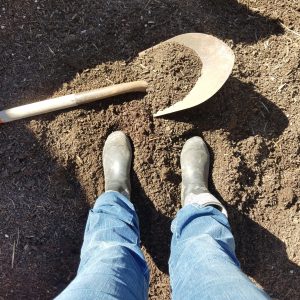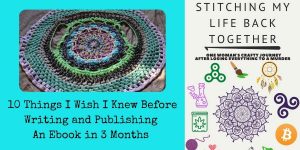You started out with good intentions–wanting to create richer soil for your garden and reduce your waste.
Maybe you even bought the pretty compost crock so your old food won’t ugly up the counter-top.
But alas, creating compost (aka gardener’s gold) in the backyard isn’t always as easy as it looks. You know there’s supposed to be brown matter and green matter, but are onion skins considered brown or green? Is it safe to use to add those glossy junk mail envelopes? Also – why does your compost STINK?
One thing is certain – if your compost pile stinks, you’re doing it wrong.
The reason why your compost stinks is because all that green stuff is rotting too fast. Those little microbial beasties are eating it up too quickly, and creating lots of heat. Adding brown matter cools it down, which means the microbes take longer to eat through the green stuff–and that’s where the magic happens!
According to compost champion and permaculture expert Geoff Lawton, brown matter should actually outweigh green matter by a ratio of about twenty to one (20:1).
If you really want to create great compost, you need a LOT of brown matter. Anything that might rot–instead of dry out–is considered green matter for our purposes. So just adding a few cardboard scraps won’t cut it, unless you only generate a very small amount of food waste.
Let your grass grow tall, then rake up the clippings after a few days (brown matter!) and add that to your compost pile. Got one of those annoying trees in your yard that’s “messy” (like a catalpa or sycamore that makes a lot of leaf litter)? Don’t put those on the curb for trash pickup – compost them! All that stuff’s called biomass, and is necessary for great compost.
If you still don’t have enough brown matter, consider buying a hay bale and add some of that to your compost pile. Hay also makes an excellent moisture-retaining mulch and keeps weeds out of your veggie beds, which means you can stack its functions.
You can also reduce if not eliminate your paper waste by composting: Add junk mail, old paperwork, all those Amazon.com boxes. Follow the third main principle of permaculture by composing all you can: Return your surplus!
So – IS glossy and printed paper material okay to compost? The short answer is, it’s up to you.
Once you’ve built the pile, turn it every three days, and in as little as 3 weeks you’ll have amazing compost to use in and around your garden and yard.
Fertile and rich garden soil can be yours, and you can nearly eliminate your household’s paper waste at the same time. Win-win! Your attempts at compost don’t have to stink, figuratively or literally.





